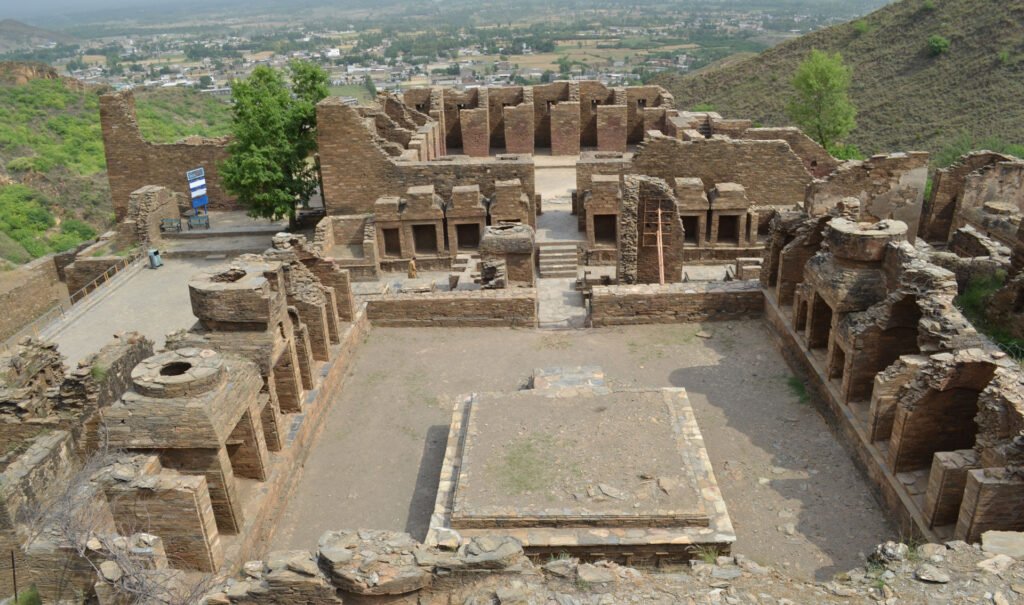Gandhara is an amalgamation of different civilizations and cultures. Gandhara first came under the Achaemenid Empire in 520 BCE, in the time of Darius the great the second ruler of Achaemenid Empire. In the period of Achaemenians Gandhara was named “Persepolis”, because of this we can found many Buddhist sculptures depicting the Persian people. After that Alexander, the Great made his entry by defeating the Persian rulers and successfully entering the territory of Gandhara in 326 BCE. The first raid of Alexander did not cause much of a cultural diffusionism, because he was not reluctant to stay but to be accepted as a king of Macedon after his father died. Later on, Mauryan Empire replaced Alexander in 321 BCE, and a new period started for Gandhara, which was the most influential empire to infuse the Buddhist culture in Gandhara. The proper infusion of Buddhist culture was in the period of Mauryan Empire, this Empire was basically the foundation of Buddhist culture in Gandhara.
When we hear or read about the Buddhist culture, we come across the Buddhist Stupas. These stupas represent the Buddha and Buddhist Monks. Every monastery is located at the west of the stupas, and in the east, we found the main stupa and the votive stupas. These stupas are designed around, and some are in square forms, which are called cruciform stupas. The main stupa is always followed by some votive stupas, and the size and length of these votive stupas define the hierarchy itself.
Every empire that has passed from the Buddhist culture and had accultured the Buddhist religion had expressed the power and richness into stupas. For example, in Kushan’s period they had built a tremendous stupa not only to pay respect to the Buddhist culture, but also to show their richness and power of their fabulous empire. Kushan was one of the empires which made sculptures not only of Buddha but also their own wise sages and kings’ sculptures to made themselves visible to the people of their power. Swat museum holds such sculptures that identifies the Kushan’s characteristics.
However, first century CE the Kushan’s entered the Gandhara region by the northern areas, which linked the route to China. This made them confined to just influence less regions to infuse their characteristics in the sculptures. That is why, Taxila was near Persian Empire and Hindukush, the route from which many possible intruders came and usurped the land of Gandhara. Therefore, Taxila region had different infusion of cultures rather than northern areas of Gandhara. This shows the diversity and the most influenced regions by different empires, who made Gandhara the part of their empire. Thus, every empire and dynasty had their own mode of carving these sculptures and promoting the Buddhist religion in Gandhara.
None the less, most of the cultures made their culture recognizable in the form of Gandhara art. However, there was one tribe that cause damage to Gandhara art and batter the sculptures of buddha and left many cities to burn. This tribe was called the White Huns or the Hephthalites, this tribe was barbaric in nature and was once removed from the Yueh-Chi tribes. This tribe ruined the sculptures and destroyed many cities of the Gandhara and plundered the cities.
Gandhara was a great platform for spreading Buddhism, many culture passed by Gandhara and eventually converted and accept Buddhism. Gandhara had many rulers for different empires which made Gandhara a diverse archaeological site, from where we can find the fusion of different cultures. Different cultures defines different hierarchy of building stupas.
